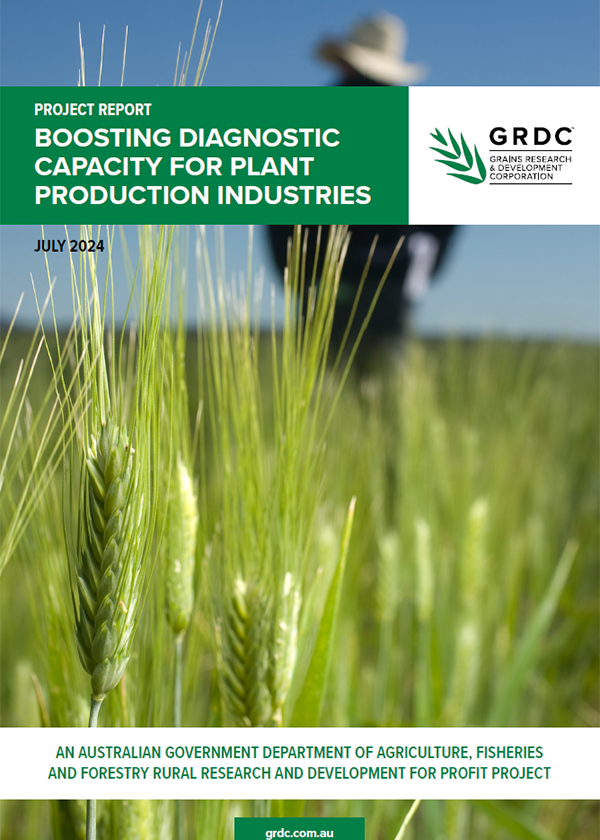Boosting diagnostic capacity for plant production industries - Using Xanthomonas as a model genus for increasing bacterial diagnostic capacity
Investment
Boosting diagnostic capacity for plant production industries - Using Xanthomonas as a model genus for increasing bacterial diagnostic capacity
This project will focus on the two themes 'Diagnostic Capacity Building' and 'Enhanced Diagnostic Tools'. Plant & Food Research (PFR) will work closely in collaboration with Australian researchers; the broader diagnostc programme is described here with PFR contributions highlighted.
Theme 1. Diagnostic Capacity Building will be addressed in two ways. Firstly, the project will link with our existing plant bacterial pathologist networks being established in Australia though the State Diagnostic laboratories and that we are extending with New Zealand colleagues (MPI and PFR). This network is being strengthened through working together on routine diagnostics and the identification of suspect exotics. The strongest network-building occurs through projects like this one, which bring together team members with different skillsets to work collaboratively for industry solutions. The second capacity-building approach will be to develop a better understanding of endemic xanthomonad pathogens. NSW DPI currently has genome sequenced of 800+ Xanthomonas isolates from collections in NSW, Queensland and Victoria. These pathogens will be correctly identified (placed within a finer-resolution genomic framework), using genome sequence analyses, and this information will be made available through updates to the Australian Plant Pest Database (APPD). This procedure will provide a chronological and geographic dataset of xanthomonad detections in Australia, with an accompanying record of host associations. Armed with this information, diagnostic agencies will be able to quickly determine if a strain represents a new incursion, a new host association, or is simply a previously detected pathogen. This knowledge will increase our biosecurity preparedness, turnaround times and ultimately reduce the impact on industry.
Theme 2. Enhanced Diagnostic Tools will be addressed using whole genome sequences to understand the genetic diversity of Xanthomonas pathogens. Genome information from the DPI collection will be used for the development of molecular diagnostic tools for use in the laboratory and, ultimately, in-field. The target bacteria for these new, comprehensive NDPs include: X. citri subsp. malveacearum, responsible for bacterial blight of cotton (NSW DPI), X. axonopodis pv. allii (Xaa), responsible for Xanthomonas Leaf Blight of Onion (Qld) and Xanthomonas fragariae, responsible of Angular Leaf Spot of Strawberries (DJRP). These pathogens are all on the High Priority Pathogen list, and do not have existing NDPs.
The Xanthomonas genome sequences will be used to develop a core/whole genome multilocus sequence analysis typing (cg/wgMLST) scheme which can be used to trace incursions and outbreaks. The initial wgMLST target will be the Xanthomonas citri group; this pathogen group is a challenging diagnostic target as there are numerous, closely related endemic xanthomonads in Australia. Genome sequences from X. campestris and X. citri subsp mangiferaindicae plus a number of exotic xanthomonads are available for comparison. The cg/wgMLST scheme for X. citri will be a proof of concept for the extension of this typing tool across the wider Xanthomonas genus.
In addition to the cg/wgMLST approach, bioinformatics pipelines will be used to identify unique genomic regions from target xanthomonads, starting with Xanthomonas citri subsp malvacearum. These unique sequences will be the subjects for laboratory based PCR/qPCR assays and will be targets for bioinformatics detection from in planta sequencing.
PFR will utilise the genome-based diagnostics and genomic information developed by Australian research groups, and adapt it for rapid in planta pathogen detection by nanopore sequencing. Plant material infected with Xanthomonas citri subsp. malvacearum and/or endemic Xanthomonas strains will be generated in NSW and supplied to PFR for DNA extraction and sequencing. Methods for DNA preparation from infected plants that maximize the quality of DNA sequence
- Project start date:
- 01/04/2020
- Project end date:
- 25/06/2023
- Crop type:
-
- All Crops
- Organisation
- The New Zealand Institute for Plant & Food Research Limited
- Region:
- North, South, West
- Project status
-
Completed
GRDC News
Five-year investment delivers enhanced biosecurity capability
05 Dec 2024
A comprehensive step-by-step guide to sustainable pest management throughout the crop growing season is now...
Resources

Boosting diagnostic capacity for plant production industries - GRDC
An Australian Government Department of Agriculture, Fisheries and Forestry Rural Research and Development for profit project.
